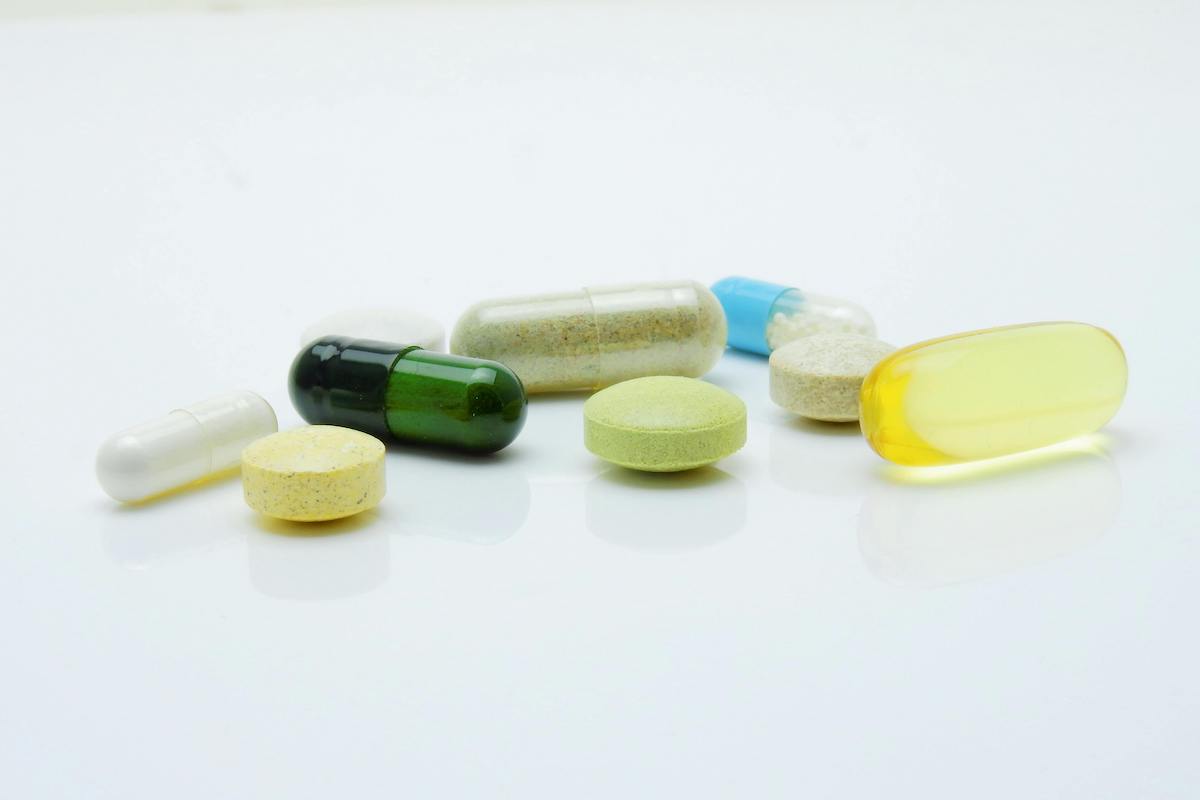A couple of years ago, I met a new patient. In the course of our conversation, she noted that she suffered from frequent hot flushes, sometimes 30 or more in a day, and she woke many times a night drenched in sweat. She was so tired, but a good night of sleep felt unattainable. During our 20-minute conversation, she had two hot flushes. She was clearly uncomfortable.
I asked her if she had ever considered hormone replacement therapy (HRT). She looked shocked. She said she had considered it but that her friends, her family, and even some of her other doctors felt it was too risky. Then she and I engaged in an evidence-based conversation about the benefits and risks of HRT.
In my practice, I often see how when patients misunderstand the data — as a result of media coverage or other health care providers — it can prevent them from accessing therapies that would help them feel their best. This comes up most often when my patients and I discuss the benefits and risks of HRT, and it gets to the heart of why I felt compelled to write Hot Flash: to help you have better conversations with your doctors about treatment options during your 40s, 50s, and beyond.
Much of the fear women have regarding the risks of HRT stems from the results of the Women’s Health Initiative (WHI)* study published in 2002 and 2004 and how they were presented to the public. It was a huge trial — two separate trials, really — sponsored in part by a wealthy pharmaceutical company, and it had not gone as expected. The results were covered extensively in the media.
Two decades later, nearly every conversation I have about HRT still includes a discussion of the WHI. Why? That is what we are going to try to understand today.
There are two reasons I think understanding this trial is important. First, the coverage of the WHI results drove home the message to women and their doctors that HRT causes cancer and heart disease and that those risks outweigh any possible benefits. A generation of women were told they just had to tough it out through menopause. And many women still hear these messages from their family, friends, and health care providers. Today, many perimenopausal women have misconceptions about the risks and benefits of HRT.
Second, the WHI is an excellent example of a large, heavily funded, randomized controlled trial that doesn’t really answer the question many people think it does: Do the benefits of HRT for management of perimenopausal symptoms outweigh the risks? The negative results from the WHI had a chilling effect on research into the management of menopause symptoms and women’s health after menopause more broadly. Exploring this seminal trial of HRT is key to understanding how we got where we are today.
* The WHI, funded by the National Heart, Lung and Blood Institute, has now enrolled more than 160,000 women in multiple trials, which have resulted in dozens of publications.
Sign up for Hot Flash by ParentData
Hot Flash is a new weekly newsletter on navigating your health and hormones in the post-reproductive years, written by Dr. Gillian Goddard. Sign up now for free!
What is the WHI study?
The data we are discussing today come from two trials conducted by the WHI. Both trials asked the same questions: Does giving estrogen to postmenopausal women prevent cardiovascular disease? Can it prevent fractures due to weak or brittle bones? And does it cause breast cancer? In one trial, the enrolled group were women who still had a uterus, and they were given estrogen and progesterone in a pill called Prempro. In the second study, the women had previously had hysterectomies and were given estrogen only, also in pill form.
In order to enroll, women had to be between the ages of 50 and 79 and in menopause. If they were already on HRT, they had to stop it for three months before being randomized to take HRT or a placebo.
The trials did not collect any data regarding the participants’ symptoms of menopause, and having symptoms of menopause was not a requirement for participation. Nor were any measures of quality of life included in the results. Rather, the data collected were focused on whether the women experienced heart attacks or strokes, broke their hip or spine, and whether they were diagnosed with breast cancer.
What did the trials find?
All large trials have experts monitoring the data for signs that things are going worse or better than expected in real time. In 2002, about nine years after the trials started, the monitors stopped the trial of women taking Prempro. They saw an increase in cardiovascular disease and breast cancer in the Prempro group compared with the placebo group.
When the authors analyzed the results of this trial, they saw a small but statistically significant increase in two measures of cardiovascular disease. The largest increase was in blood clots, a known side effect of estrogen, particularly in smokers. They also saw a small increase in invasive breast cancer that was not statistically significant. This increase was seen only after five years of HRT — and the women who had previously taken HRT were more likely to develop breast cancer. Based on their data, if 10,000 women took Prempro for one year, there would be eight extra cases of breast cancer.
The results of the estrogen-only trial were quite different. No increase in cardiovascular disease or breast cancer was seen in this group. However, two years later, the estrogen-only trial was stopped as well, due to a concern about stroke. This was controversial even among the experts monitoring the trials. The increase in stroke was small, and there was no increase in heart disease or breast cancer seen in the estrogen-only group.
It is important to note that stopping the estrogen-only trial early meant that there were not enough study participants and health events to know that any differences seen were real. Breast cancer rates in the estrogen group were lower than in the placebo group, but not quite enough to be statistically significant. This group was also much more likely than the women in the estrogen-plus-progesterone group to have taken HRT prior to participating in the trial (about 50% in the estrogen-only group and about 25% in the Prempro group). So their postmenopausal exposure to estrogen was likely higher overall, making the results even more unexpected.
Overall the effects seen in both trials were small, but they suggested some possible risks with HRT.
Why did this trial get so much attention?
The attitude among doctors and patients before the WHI was very different from the attitude today. We thought HRT was good — great — maybe even the fountain of youth. The hypothesis of both trials was that all postmenopausal women would benefit from HRT. So any finding that suggested something other than this was met with some shock. Months later, the New York Times and Washington Post were talking about the impact of the results.
The results of these trials have reverberated through the medical community. Women across the country stopped taking their HRT, fearful of developing breast cancer or heart disease. Doctors refused to prescribe HRT, and patients refused to take it. Research was impacted. It was hard to get money to do more trials, it was hard to get ethics boards at hospitals to sign off on them, and it was hard to recruit patients to take part in them.
When I started medical school a few years later, people were just starting to talk about the results in a more thoughtful way. Since then, these two trials have sparked a lot of discussion.
One concern is that the specific formulations of hormones used in the trials might have contributed to the differences seen. Many experts feel that the type of progesterone used in the Prempro trial may have caused the variation in outcome between the trials. There are other forms of progesterone that seem to be safer.
Related, in both studies estrogen was given in pill form. We now believe that estrogen given in patches or gels applied to the skin is safer, because it enters the circulation more similarly to how estrogen from the ovaries enters the circulation.
Another concern is the age and demographics of the women in the trials. The women in the trials were older. More than 60% of them were over age 60 — which means they are likely to be 10 or more years post-menopause. In the Prempro trial, 84% of participants were white and about 25% had been on HRT in the past. Critically, 40% were past smokers and more than 10% were current smokers.
Understanding how the details of the study design significantly impacted the results has allowed researchers to design better studies. It has also helped women become more willing to try HRT again.
Where are we today?
Subsequent studies have suggested that giving HRT within 10 years of menopause is safe and, for women who do not smoke, these trials may be less relevant.
The most important thing to remember about the WHI trials is that they did not assess the benefits of HRT for treating perimenopausal symptoms. Treating women’s perimenopausal symptoms and improving their quality of life is a benefit that should be taken into account when doctors and patients consider whether HRT is appropriate.
As a doctor, my job is to help my patients feel better. Virtually every treatment I have to help them feel better — including behavior changes like exercise and supplements like iron — has benefits and risks. When I have a treatment that can offer patients relief, I want to make sure we are considering the benefits and risks without bias. I don’t want my patients to suffer unnecessarily.
Twenty years later, we are just starting to see a shift in feelings about HRT both among practitioners and patients. Where are we now? There is no right or wrong answer. HRT is no longer recommended routinely for all women. But women with symptoms of perimenopause can benefit from a substantial reduction in their symptoms with HRT. Taking HRT is a personal decision to discuss with your doctor. However, an accurate assessment of the risks and benefits should be part of that conversation.















Log in